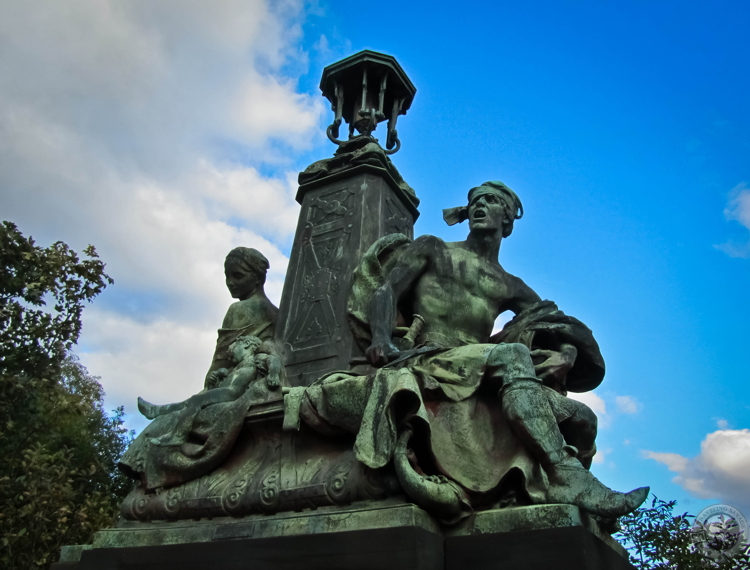Eight figures guard the corners of Glasgow’s Kelvin Way Bridge. I pass by Navigation and Shipbuilding, and look across the street to Commerce and Industry and Philosophy and Inspiration, before gazing up at Peace and War. The young autumn’s sunlight clangs off the weathered bronze of a woman with spinning wheel and sleeping babe. The arresting image of a bandaged man, mouth agape, staring into the distance figures to be War. His arms were blown off into the river below when a German bomb fell here in 1941. For years the haunting statue peered armless into the Glaswegian mists.
It took only 15 years for these trophies of WWI to be hammered in WWII. What will remain of them, of Glasgow, in 1,000 years? Nearly two millennia ago the Romans thrust deep into Britannia and built walls to keep out the “barbarians” of the north. The legionnaires brought a measure of peace to Rome and a heap of war to the Caledonians. Where is the line between the two? A lamppost, like here on Kelvin Way Bridge? Rome fell, and the barbarians picked over her bones in Britannia. The conqueror was gone. Peace. But now they fought amongst themselves for the treasures of fallen Rome: stones, steel, and silver. When the creek bed dried up in Glasgow 50 years later, passers-by found more of War‘s arms and disappeared into the city.


Keith, enjoyed this. Especially liked ‘For years the haunting statue peered armless into the Glaswegian mists.’ Much to like about Glasgow, need to bash out some words on this subject myself. T
Thanks Tom. Modern Glasgow is a place waiting to be explored by more travelers.